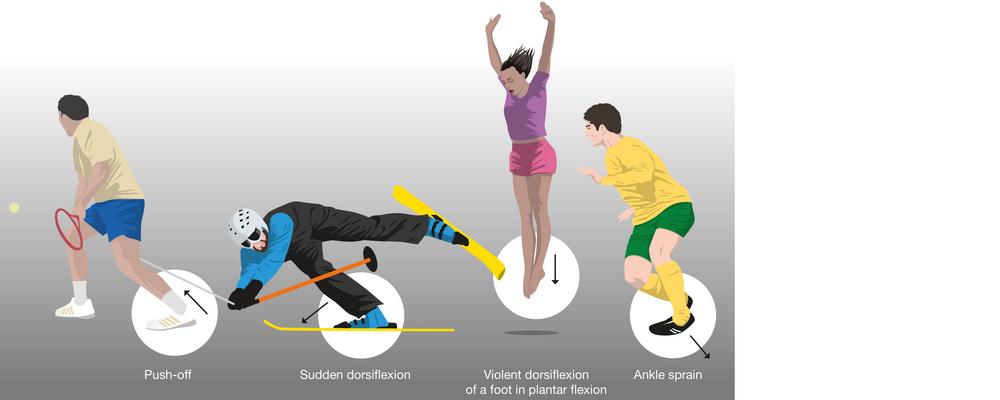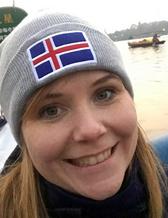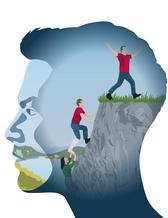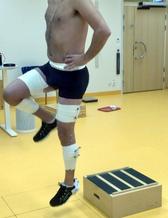
- Home
- Research
- Find research
- Unnur Jónsdóttir: Fear’s impact post Achilles tendon rupture
Unnur Jónsdóttir: Fear’s impact post Achilles tendon rupture
Achilles tendon rupture is a common injury, with about 20 percent of individuals unable to return to their previous level of physical activity post-injury. Unnur Sædís Jónsdóttir has investigated the causes, identifying fear as a significant obstacle.

UNNUR SÆDÍS JÓNSDÓTTIR
Dissertation Defense: December 15, 2023 (click for details)
Doctoral Thesis: Acute Achilles tendon rupture: The impact of physiological and psychological factors on function and return to activity
Research Area: Orthopaedics
Sahlgrenska Academy, The Institute of Clinical Sciences
What led to your thesis?
“Those who suffer from Achilles tendon rupture are typically active, often middle-aged men who engage in activities requiring quick changes of direction. Approximately 20 percent of them do not resume their previous level of activity. My aim was to uncover the reasons behind this,” says Unnur Jónsdóttir, a physiotherapist living in Reykjavik, Iceland.
She works at Gáski Sjúkraþjálfun clinic, specializing in sports injuries, rehabilitation, and return to activity.

“Mental Support to Patients”
Could you summarize your research?
“I've examined the foot structure on both the injured and healthy sides after Achilles tendon rupture, the impact of fatigue on lower extremity kinetics, and how the fear of reinjury affects biomechanics post-rupture, as well as crucial factors influencing return to physical activity.”
What are the key findings and their practical implications?
“I consider three aspects critical in my research. Firstly, the value of engaging patients in treatment discussions, enabling them to understand the process. Secondly, it's crucial to provide mental support to ensure patients aren't hesitant to use their leg and foot,” says Unnur Jónsdóttir, adding:
“The third aspect emphasizes the significance of overall body strength training following an Achilles tendon rupture. A practical benefit of these findings is the potential for healthcare professionals to employ them as guidance in their practice.”

Half refrained due to fear
Unnur Jónsdóttir’s thesis indicates fear as a limiting factor among patients with previous Achilles tendon ruptures. In one study, half of the participants admitted refraining from certain physical activities due to fear of reinjuring the tendon.
Those expressing fear exhibited reduced peak power in the ankle joint (on the previously injured side) during a single-leg drop countermovement jump (CMJ). Conversely, they displayed increased compensatory power in the knee joint.
“These results raise the question of whether a weaker strength on the injured side caused this difference or if patients simply feared utilizing their strength during the drop CMJ,” says Unnur Jónsdóttir, further noting:
“Asymmetry in power distribution, as observed in the ‘fear group’, might elevate the risk of overuse injuries later in life.”
Canceled trips to Gothenburg
What has been enjoyable about the PhD project?
“It’s fun and rewarding to be part of the team at the ‘R House’ lab at Sahlgrenska University Hospital Mölndal and to attend conferences to present our research.
And what has been challenging?
“Just before Covid, I moved back to Iceland but had plans to visit Gothenburg for courses and collaborations with colleagues a few times year. Due to the pandemic, it became impossible, hence courses and meetings to be done via digital platforms.
Your decision to pursue your PhD at the University of Gothenburg – does it relate to Jón Karlsson, a fellow Icelander and professor of orthopaedics and sports traumatology?
“I arrived in Gothenburg in 2017 to work at IFK-Kliniken Rehab. Annelie Brorsson, now my primary supervisor, also worked there. When she learned of my interest in research, she suggested applying for a doctoral position at the University of Gothenburg. One of her selling points was that Jón Karlsson worked there, and he also became one of my supervisors. Everything clicked so well that I’ll now defend my thesis in December.”
Text: Jakob Lundberg